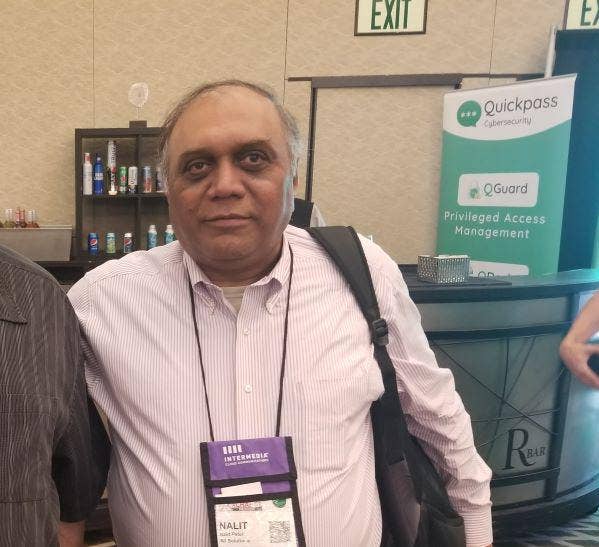What’s Next In Addressing Digital Transformation? MSPs Weigh In
CRN asked a handful of MSPs about how they are helping customers tackle digital transformation as hybrid work takes hold across the business world.

Where To Next?
Hybrid work is possibly the biggest driving force right now in the IT space, and it’s sparking much change. With that in mind, CRN spoke with MSPs who shared their opinions on what’s next in digital transformation and how they can help customers.
The early days of the COVID-19 pandemic bought on panic buying—and not just at the grocery store. Businesses were grabbing any hardware or software they could get their hands on to enable their employees to work from home, in some cases overnight. The most popular of the offerings were collaboration platforms and associated gear, such as headsets, as well as external monitors, keyboards and routers. Then came the cloud-based services to give employees access to the applications they needed to get their work done, while staying secure. But some are returning to the office, some are staying remote, and others are doing a blend—enter hybrid work. No one is panic buying anymore. So, what comes next?
The question CRN posed to the MSP executives was, “What‘s the next big area of opportunity in addressing digital transformation?” Here’s what a sampling of MSPs had to say on the subject at CRN parent The Channel Company’s NexGen 2022 event in Orlando, Fla.

Nalit Patel, CEO, Livingston, N.J.-based All Solutions
Everybody is doing digital transformation. It’s like putting a jigsaw puzzle [together]. But in putting the jigsaw puzzle [together], you’re leaving lots of gaps in between. So, what you want to do is, A, whatever those gaps are, you need to tighten that.
And think about it. This is no different than putting a quilt together. So when you have the threads put together properly, the quilt final product will be excellent. Together with that, the opportunity that comes in is more about data and data monetization. So, you will have all of these different applications producing tons of data. How do you take the data and convert it into monetization? … How do you correlate that [data]? How do you put minds behind them? This, AI cannot do. A human has to sit down and understand. So that is the opportunity and that is what has to be taught at colleges today so kids can think a little differently.

Sean Kesavan, Sr. Systems Manager, Fremont, Calif.-based ASA Computers
AI, because that is transforming everything right now, both AI and machine learning. That is going to define the future of communication.

Feyzi Fatehi, CEO, Aliso Viejo, Calif.-based Corent Tech
To me, the foundation of digital transformation is to be on the cloud, No. 1. No. 2 is to be on the cloud, not for the sake of being on the cloud, but be on the cloud because you want to take advantage of the flexibilities that cloud provides, meaning migrating to the cloud, modernizing on the cloud, and then constantly optimizing on the cloud. Migrate, modernize and optimize on an ongoing basis. When you modernize over time, on your own pace, then it’s time to, on an ongoing basis, optimize because workloads change, usage patterns change, circumstances change. You want to have an as-a-service component that constantly monitors, adjusts, optimizes the use of the cloud because some people move from on-premises to the cloud without optimizing, without modernizing, and their costs skyrocket.

Miles McCrary, Business Owner, Tyler, Texas-based Tech Doctor
Migration to the cloud remains a big deal. Everybody’s trying to jump on that and get into it, especially when we still have a lot of on-premises software. I think there’s still a lot of room for [cloud migration] to grow with more people moving to those SaaS applications.

Brian Bakkila, Sales Operations Manager, Grand Rapids, Mich.-based Applied Innovations
COVID forced us to rethink organizationally how we utilize technology, how we pick remote workers, all of those sorts of things. We had to be a lot more progressive about how we applied technologies to allow our clients to work as well as be protected no matter where they were. …. There are technologies out there that maybe we’re not using optimally, whether that’s the 365 platform or Workspace. The way people are working is different. So how can we get more out of those platforms and demonstrate more value? I think that’s an area to look at.

Billy Merchant, Sr. Account Executive, Miramar, Fla.-based United Data Technologies
For me personally, I’m trying to get these rural schools protected, managed security. That’s my big thing right now, and we’re having some success. It’s happening.

Phillip Walker, CEO, Manhattan Beach, Calif.-based Network Solutions Provider
IoT, analytics and blockchain. MSPs will play a huge role in assisting companies in incorporating these innovative technologies to stay market-relevant in the future. Moreover, with a top-notch managed services provider, businesses can pinpoint the knowledge gaps to optimize the strategies across relevant business operations that work on the cloud.
5G and the next LTE networks will empower all next-generation technologies, enabling AI, blockchain, IoT and a new optimized world.
William Hernandez, Owner, De Pere, Wis.-based- Technology Architects
I think it’s just going to be about more and more security at this point and everybody’s doing it. Even my mom-and-pop shops are starting to hear about security and, to be honest, insurance companies have been teaching them that stuff—you have to do this, this, and that to even get insurance. It’s an easy sell too because it’s not just us saying it.